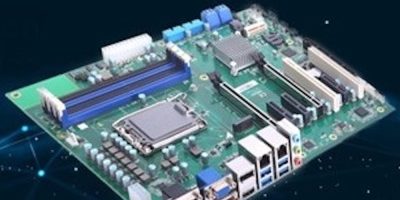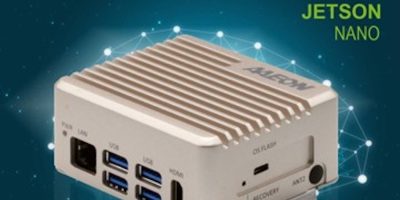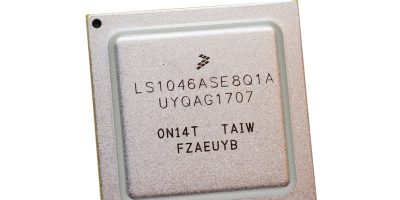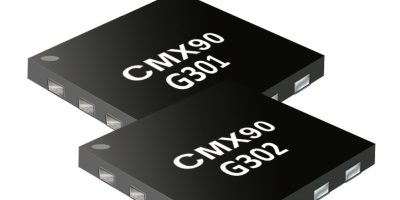Equipped with an LGA1700 socket for the 12th generation Intel Core i9 / i7 / i5 / i3 processors (code named Alder Lake-S), the IBM540 is the latest industrial ATX motherboard from Axiomtek.
It has quad displays and dual GPU expansion for AIoT applications. The IMB540 is built with the Intel R680E chipset and the Alder Lake-S CPU options. It also has four DDR4-3200 ECC/non-ECC un-buffered long-DIMM slots with a total capacity of 128Gbyte. There are five PCIe slots, two 4.0 x16 slots and three x4 slots for GPU, AI acceleration, frame grabber, NIC and motion control card configurations.
The networking interfaces consist of a 2.5GbE LAN port with time-sensitive networking (TSN), a GbE LAN port, as well as a PCIe mini card slot with SIM slot for Wi-Fi / Bluetooth / LTE connectivity. The Intel Iris Xe Graphics allows for support of up to four independent displays via HDMI, DVI-D, VGA, and DisplayPort++.
For storage, there are four SATA 3.0 ports with integrated RAID 0 / 1 / 5 / 10 and additional storage is available via an M.2 Key M 2280 slot with PCIe x4 signal for NVMe SSD. The USB interface support includes four USB 3.2 Gen2, four USB 3.2 Gen1 and five USB 2.0 ports. The board is further equipped with four RS-232, two RS-232 / -422 /- 485, eight-channel programmable digital I/O, one HD codec audio, one SMBus, and one PS/2 keyboard and mouse.
The industrial ATX motherboard can withstand a wide operating temperature range from 0 to 60 degrees C. It also supports onboard Trusted Platform Module 2.0 (TPM) to provide hardware-based data protection. Operating systems are Windows 10 and Linux.
The IMB540 drives AI computing performance and includes sufficient I/O, high-speed interfaces, multi-display connection capability and flexible expansion slots for medical imaging, video surveillance, computer vision and data analysis, said Kasper Tsai, the product manager of the AIoT team at Axiomtek. “Moreover, we have the capability to assist with any customer’s industrial integration requirements and achieve fast time to market,” he added.







